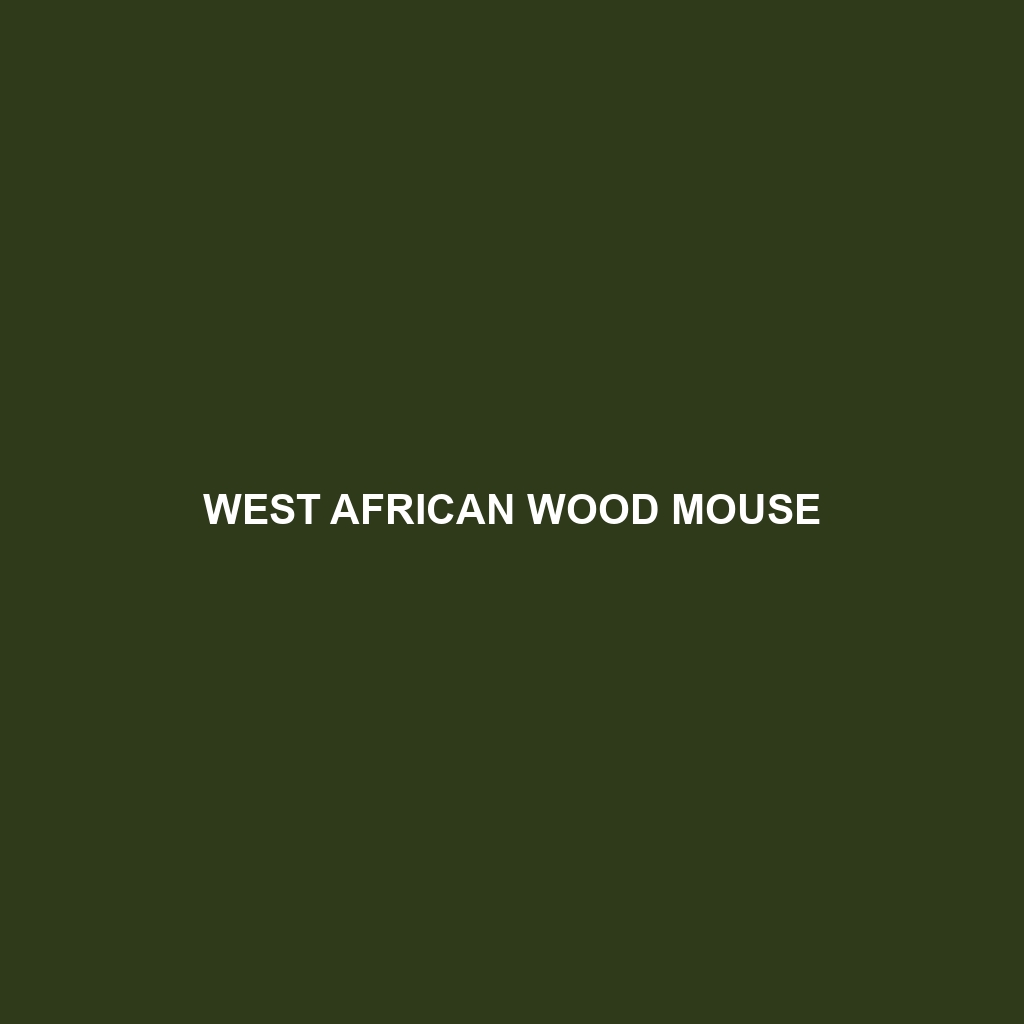Species Description: West African Wood Mouse
Common Name: West African Wood Mouse
Scientific Name: Mus setulosus
Habitat
The West African Wood Mouse is primarily found in the regions of West Africa, including countries such as Ghana, Nigeria, and Ivory Coast. It thrives in a variety of habitats, including dense forests, grasslands, and areas near agricultural fields. This adaptability to different environments allows them to occupy both wooded and open areas, which contribute to their widespread presence across the region.
Physical Characteristics
The West African Wood Mouse typically measures between 7 to 10 inches in length, including the tail, which can be roughly the same length as its body. Its fur is generally a mixture of brown and gray, providing excellent camouflage against the forest floor. One distinguishing feature of this species is its large ears and vibrant black eyes, giving it acute hearing and vision for detecting predators.
Behavior
These mice are primarily nocturnal, becoming active during the night while foraging for food and establishing their territory. The West African Wood Mouse is known for its social behavior, often living in small groups. They exhibit behaviors such as nesting and grooming each other, which are crucial for maintaining social bonds.
Diet
The diet of the West African Wood Mouse consists mainly of seeds, fruits, and nuts. They are opportunistic feeders and can also consume insects and fungi when available. Their foraging habits include hoarding food in burrows, which helps them survive in leaner times, demonstrating their adaptability in various environmental conditions.
Reproduction
Breeding typically occurs in the wet season, peaking between April and August. A female can produce multiple litters per year, with each litter consisting of 3 to 7 offspring. The young are born blind and hairless, relying on their mother for warmth and nourishment. Notably, juvenile mice often remain with their mother until they are capable of independent living.
Conservation Status
Currently, the West African Wood Mouse is not classified as endangered, but it faces threats from habitat loss due to agriculture and deforestation. As a result, it is considered to be in a vulnerable position in certain areas, highlighting the need for habitat conservation efforts.
Interesting Facts
One fascinating aspect of the West African Wood Mouse is its ability to produce a variety of vocalizations, which help it communicate with others in its group. Additionally, this species is known for its impressive ability to navigate through dense vegetation, often using its whiskers to sense nearby objects.
Role in Ecosystem
The West African Wood Mouse plays a critical role in its ecosystem as both a seed disperser and a prey species for various predators. By hoarding seeds, they contribute to forest regeneration, while their presence supports the food web, particularly in maintaining the population dynamics of several predatory animals.
